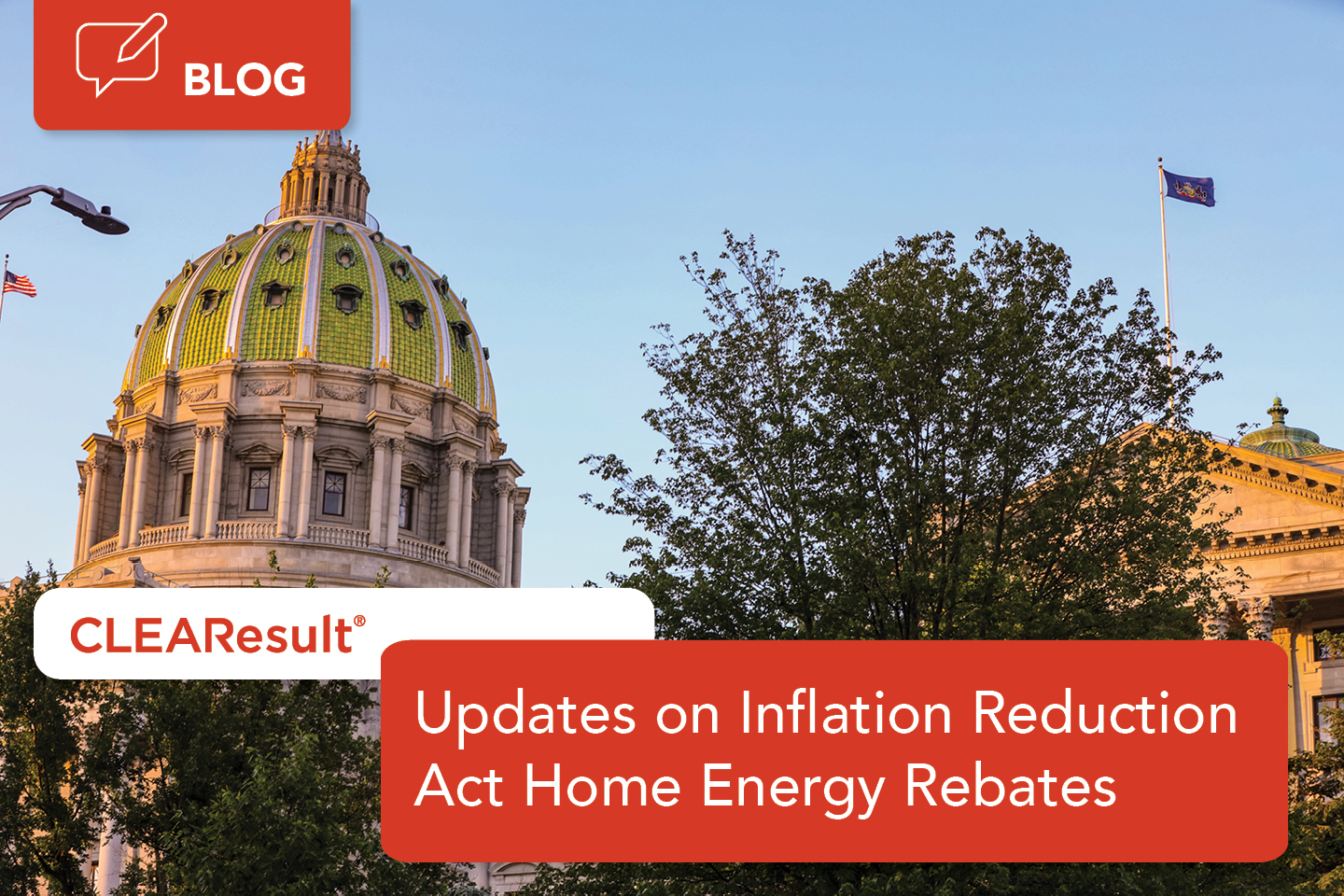Updates on Inflation Reduction Act Home Energy Rebates (January 2024)

We expect 2024 to be a year in which Inflation Reduction Act (IRA) Home Energy Rebate programs will achieve impressive gains. As funding propels rapid advancements in energy efficiency, states will move forward in planning and implementing these initiatives, while utilities, partners and homeowners closely monitor developments.
Here are the most recent IRA developments and opportunities for stakeholders.
First state applications are in
Last week, four states became the first to officially apply for IRA Home Energy Rebate program funding. California, Hawaii, New Mexico and New York submitted their applications for the Home Electrification and Appliance Rebate (HEAR) programs, marking the first significant step towards getting these programs up and running in 2024. It's not surprising that the HEAR program is the first to receive applications – its similarities to many existing rebate programs across the country means states can leverage existing infrastructure to get these programs running quickly.
The Department of Energy (DOE) will now review their applications, and upon approval, these states will proceed to launch their respective programs. We will watch with interest as several states progress, offering new and exciting incentives specifically targeted at low-to-moderate income (LMI) customers nationwide. You can check the status of other states’ applications on the DOE website.
DOE releases updated guidance
After releasing the initial guidance in late July, the DOE has revised many of the documents to assist state energy offices in planning and applying for the Home Energy Rebate programs. A new set of updates was shared last week, including:
- Integrating existing state Weatherization Assistance Programs (WAP) with the new HEAR programs guide: This integration could potentially provide even greater energy saving and home improvement opportunities for low-income households. As WAP programs are often administered by different state agencies than the energy office, it will require additional coordination and planning.
- New guidance around energy consumption data access for the Home Efficiency Rebates (HER) program: States will need to collaborate with local utilities to gain insight into the energy consumption of participating homes in the HER program to measure the effectiveness of energy saving measures. These resources outline the data needed and how to safely share it and will hopefully prompt additional collaboration between states and utilities as these programs launch.
- Guidance on leveraging other funding sources: Many programs will look to increase incentive program participation for customers by using other program funding such as WAP or existing utility offerings. This document (below) highlights which funding sources can be “braided” or help support customers as they move forward with upgrades.
IRA incentives in the national news
In early January, Kara Saul Rinaldi, President and CEO of AnnDyl Policy Group and a clean energy policy advocate, was featured on NPR’s Weekend Edition Sunday. She discussed how IRA tax credits and rebates will motivate customers to make more energy and climate-conscious choices as they look to upgrade their homes in 2024 and beyond. With the expansion of the 25C tax credit and many state-run rebate programs rolling out later this year, there's never been a better time for homeowners to invest in energy efficiency. As we kick off the new year, we're pleased to see IRA incentives gaining momentum both in the states and in the national media.
Listen to the full interview here.
New technology platform aimed to maximize IRA programs
In December, we launched CLEAResult ATLAS™ IRA Home Energy Rebates, a technology toolkit designed to help state energy offices navigate the IRA’s complex workflows and quickly mobilize to administer its programs as seamlessly as possible. State energy offices will need to address key challenges like verifying income, stacking rebates for customers, integrating with DOE-compliant software and managing a network of partners. Thanks to its prepackaged API integration with the DOE’s national rebate tracker, CLEAResult ATLAS™ IRA Home Energy Rebates allows states to tackle these challenges all in one platform. It’s a configurable, end-to-end solution built to adapt to the needs of each state’s implementation.
For more on CLEAResult ATLAS IRA™ Home Energy Rebates, check out our full press release or request a demo on our technology page.
________
For more news and content, check out our IRA hub and follow us on LinkedIn. We’ll continue to send out periodic updates to keep you informed.